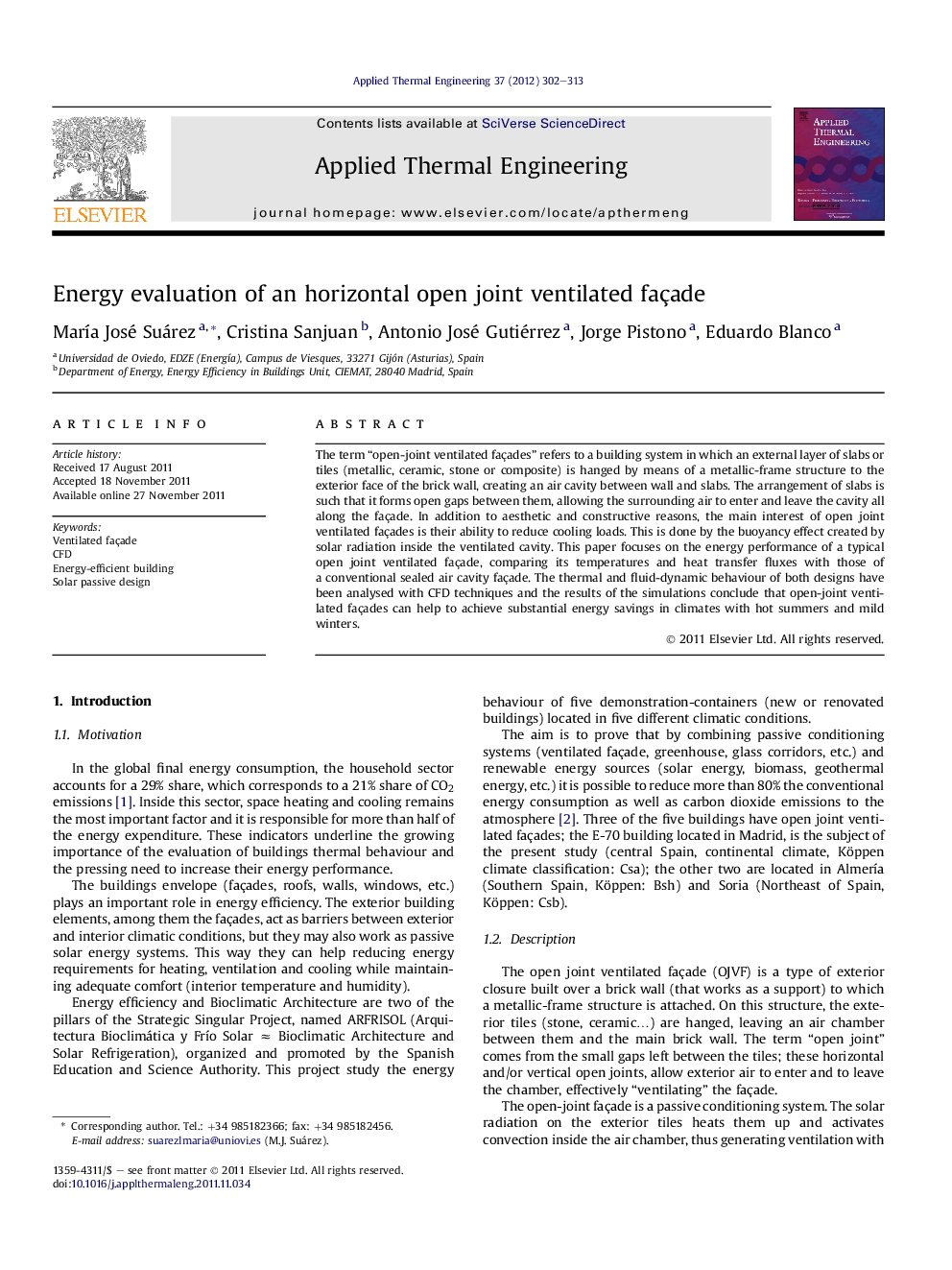| Article ID | Journal | Published Year | Pages | File Type |
|---|---|---|---|---|
| 647440 | Applied Thermal Engineering | 2012 | 12 Pages |
The term “open-joint ventilated façades” refers to a building system in which an external layer of slabs or tiles (metallic, ceramic, stone or composite) is hanged by means of a metallic-frame structure to the exterior face of the brick wall, creating an air cavity between wall and slabs. The arrangement of slabs is such that it forms open gaps between them, allowing the surrounding air to enter and leave the cavity all along the façade. In addition to aesthetic and constructive reasons, the main interest of open joint ventilated façades is their ability to reduce cooling loads. This is done by the buoyancy effect created by solar radiation inside the ventilated cavity. This paper focuses on the energy performance of a typical open joint ventilated façade, comparing its temperatures and heat transfer fluxes with those of a conventional sealed air cavity façade. The thermal and fluid-dynamic behaviour of both designs have been analysed with CFD techniques and the results of the simulations conclude that open-joint ventilated façades can help to achieve substantial energy savings in climates with hot summers and mild winters.
► Buildings are responsible for around 40% of energy final use in developed countries. ► Therefore buildings also contribute to same percentage of environmental pollution. ► Solar passive designs are a mean of reducing those effects. ► Open joint ventilated façade is the design here analised with numerical simulation. ► Conclusion: reduction of energy needs in south oriented façades in hot climates.
